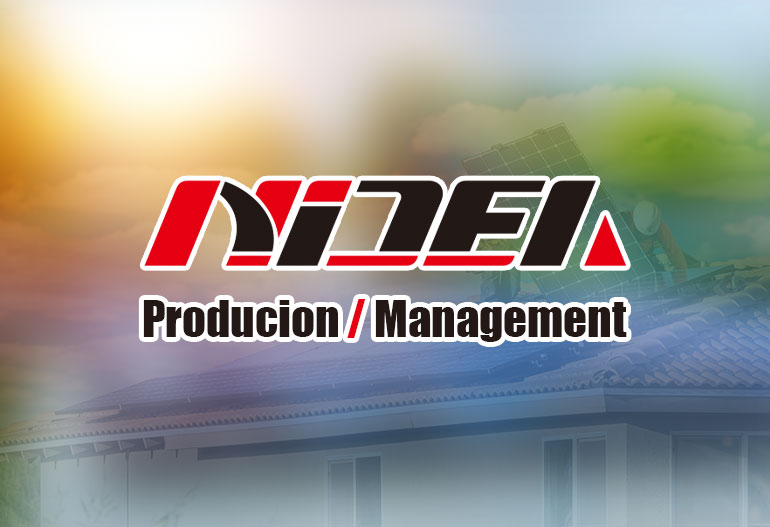Design Essentials of DC Power Supply Systems for Extreme Environments (High/Low Temperature)
1. Introduction: The Critical Role of DC Power in Harsh Conditions
DC power supply systems are the lifeline for critical infrastructure and equipment across various industries, including telecommunications, electric utilities, rail transportation, and industrial automation. These systems provide uninterrupted, stable, and reliable power to essential loads such as circuit breakers, protection relays, communication devices, and emergency control systems. However, when deployed in extreme environments—ranging from scorching deserts to frigid arctic regions—these systems face severe operational challenges that can compromise their performance, reliability, and lifespan.
The performance of electronic components, batteries, and insulating materials is inherently temperature-dependent. Extreme heat accelerates aging and degradation, while extreme cold reduces efficiency and can lead to outright failure. Designing a DC power system for such conditions requires a holistic approach that goes beyond standard commercial specifications. This paper details the essential design considerations, component selection criteria, and engineering strategies for developing robust DC power supply systems capable of reliable operation in extreme high- and low-temperature environments.
2. Fundamental Impacts of Temperature Extremes on System Components
2.1. High-Temperature Effects (> 40°C / 104°F)
•
Electronic Components (Rectifiers, Controllers): Increased leakage currents in semiconductors; reduced efficiency and increased thermal stress in power devices (MOSFETs, IGBTs); accelerated electrolytic capacitor drying and failure; potential for thermal runaway.
•
Batteries (Valve-Regulated Lead-Acid - VRLA, Lithium-Ion): The most temperature-sensitive component. High temperatures drastically accelerate chemical reactions, leading to:
•
Reduced Cycle Life: For every 10°C above 25°C, the lifespan of a VRLA battery is roughly halved (Arrhenius Law).
•
Increased Self-Discharge: Higher rates of capacity loss when idle.
•
Thermal Runaway Risk: In worst cases, excessive heat can lead to catastrophic failure, especially in Li-ion batteries.
•
Materials: Degradation of cable insulation, seals, and plastics, reducing dielectric strength and weatherproofing.
2.2. Low-Temperature Effects (< -20°C / -4°F)
•
Electronic Components: Reduced gain in transistors; increased resistance of conductors; potential for ceramic capacitors to undergo capacitance shifts; lubricants in fans and connectors can solidify.
•
Batteries:
•
Reduced Capacity: Electrochemical activity slows down significantly. A VRLA battery at -20°C may only deliver 50-60% of its rated capacity. Lithium-ion batteries experience severe performance loss and cannot be charged below 0°C without causing permanent damage.
•
Increased Internal Resistance: Leads to significant voltage sag under load, potentially causing system brownouts.
•
Physical Damage: Freezing of the electrolyte in discharged lead-acid batteries, causing permanent physical damage.
•
Materials: Plastics and metals become brittle and are prone to cracking under mechanical stress.
3. Key Design Essentials for High-Temperature Environments
3.1. Component Selection and Derating
•
Semiconductors: Select components rated for high junction temperatures (e.g., > 150°C). Use wide-bandgap semiconductors (SiC, GaN) where possible for their higher temperature tolerance and efficiency.
•
Capacitors: Avoid aluminum electrolytic capacitors. Use high-temperature polymer capacitors or ceramic capacitors with stable characteristics over temperature.
•
Transformers and Inductors: Use materials with high Curie temperatures and Class H (180°C) or higher insulation systems.
•
Rigorous Derating: Apply aggressive thermal derating rules. Operate components at no more than 50-60% of their maximum rated power/temperature under worst-case ambient conditions.
3.2. Advanced Thermal Management
Passive cooling (heat sinks) is often insufficient.
•
Forced Air Cooling: Use high-temperature rated fans to create directed airflow over heat sinks. Implement temperature-controlled fan speed to balance cooling and dust ingestion.
•
Active Cooling (Air Conditioning): For enclosed cabinets in very hot environments, integrate a dedicated, high-reliability air conditioner or heat exchanger to maintain an internal temperature within a safe operating range. This is often the most effective but also most energy-intensive solution.
•
Heat Path Design: Use thermal interface materials and design low-thermal-resistance paths from hot components to the chassis or external heat sinks.
3.3. Battery System Design
•
Battery Technology Choice: Lithium Iron Phosphate (LFP) batteries generally offer better high-temperature performance and longer cycle life than VRLA. However, they still require thermal management.
•
Active Battery Cooling: Install batteries in a separate, cooled compartment within the enclosure. Use fans or air conditioning to keep battery temperature as close to 25°C as possible.
•
Temperature-Compensated Charging: The charger must reduce the float and equalization voltage as temperature increases to prevent overcharging and excessive gassing. This is critical for maximizing battery life.
3.4. Enclosure and Material Selection
•
Sun Reflectivity: Use light-colored (white or silver) and highly reflective exterior finishes to minimize solar heat gain.
•
Ventilation: Ensure well-designed ventilation with appropriate IP-rated filters to prevent dust ingress while allowing hot air to escape.
•
Material Durability: Use UV-stabilized and heat-resistant plastics and coatings to prevent degradation.
4. Key Design Essentials for Low-Temperature Environments
4.1. Component Selection for Cold Operation
•
Semiconductors: While generally more robust in cold, ensure components are specified for the full low-temperature range, paying attention to datasheet minimum operating temperatures.
•
Capacitors: Select ceramic or film capacitors known for stable performance at low temperatures. Avoid electrolytes.
•
Display & Human-Machine Interface (HMI): LCD screens have a very narrow operating temperature range and may require heaters to function.
4.2. Heating and Insulation
•
Cabinet Heaters: The primary solution. Install thermostatically controlled strip or space heaters inside the enclosure to maintain a minimum temperature (e.g., +5°C) for the electronics and batteries.
•
Thermal Insulation: Line the enclosure with foam or other insulating material to reduce the power required by the heaters and protect against rapid temperature changes.
•
Battery Compartment Heating: Batteries require dedicated heating pads or blankets controlled by a separate thermostat to keep them above their minimum operating/charging temperature.
4.3. Battery System Design
•
Technology Choice: Nickel-Cadmium (Ni-Cd) batteries have historically been preferred for extreme cold due to their superior low-temperature performance. However, modern Heated Lithium-ion batteries are becoming the standard for new designs, as they integrate heating elements and control logic to self-regulate their temperature.
•
Capacity Derating: System sizing must account for the significant reduction in available battery capacity at low temperatures. This often means installing a larger battery bank than would be needed for a temperate climate.
•
Charging Control: Charging must be prohibited until the battery internal temperature is raised to a safe level (>0°C for Li-ion, >10°C for VRLA) by the heating system.
4.4. Mechanical and Material Considerations
•
Material Brittleness: All structural components, cables, and connectors must be rated for the lowest possible service temperature to avoid cracking.
•
Lubricants: Use special low-temperature lubricants for any moving parts like fans or hinges.
•
Sealing: Thermal cycling can cause gaskets and seals to harden and fail. Use silicone-based or other flexible, cold-rated sealing materials.
5. Universal Design Strategies for All Extreme Environments
•
Environmental Testing: The entire system must undergo rigorous testing per standards like IEC 60068-2 (e.g., Test Db: Dry Heat; Test Ab: Low Temperature) to validate performance under extreme conditions.
•
Environmental Sealing (IP Rating): A high IP rating (e.g., IP54 or IP55) is crucial to protect against dust and moisture, which can be exacerbated by temperature-driven condensation inside enclosures.
•
Robust Monitoring and Control: The system controller must continuously monitor internal and external temperatures, battery temperature, heater status, and cooler status. It should generate alarms for any abnormal conditions and implement automatic control strategies (e.g., enable heaters, derate charger output).
•
Power Supply for Auxiliaries: The system design must account for the significant additional power consumption of heaters and cooling systems in the overall load calculation.
•
Redundancy: Given the increased stress, incorporating redundancy in critical components like rectifier modules can enhance overall system reliability.
6. Conclusion
Designing a DC power supply system for extreme temperature environments is a complex engineering challenge that demands a meticulous, system-level approach. There is no single solution; success hinges on a deep understanding of the unique failures modes induced by heat and cold and the careful selection and integration of components, thermal management systems, and intelligent controls.
The essence of the design lies in creating a stable microclimate within the system enclosure. Whether through active cooling in the desert or active heating in the arctic, the goal is to shield the sensitive electronic and electrochemical components from the external extremes, allowing them to operate within their specified, benign temperature windows.
By adhering to the principles of aggressive component derating, implementing robust active thermal management, making informed battery technology choices, and employing ruggedized materials, engineers can develop DC power systems that deliver unwavering reliability. These systems ensure that critical infrastructure remains powered and protected, even under the most demanding environmental conditions on Earth.

